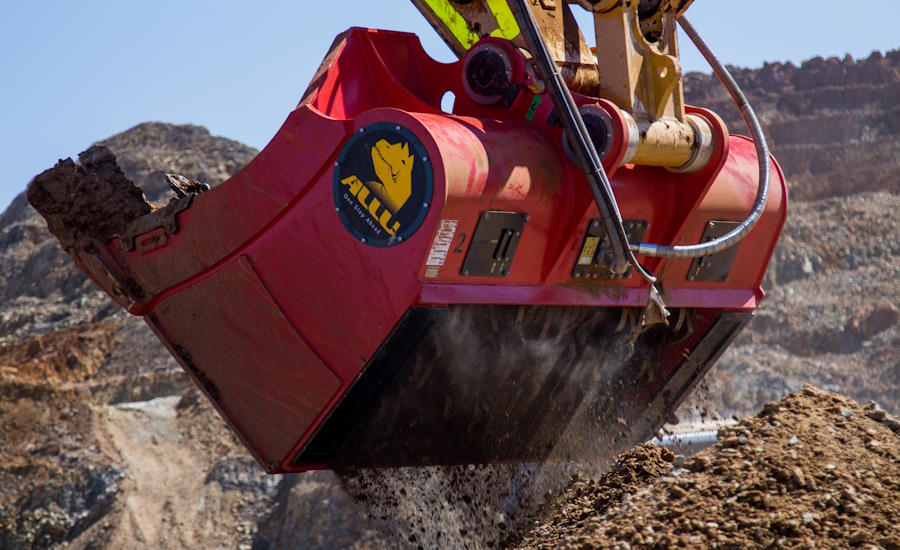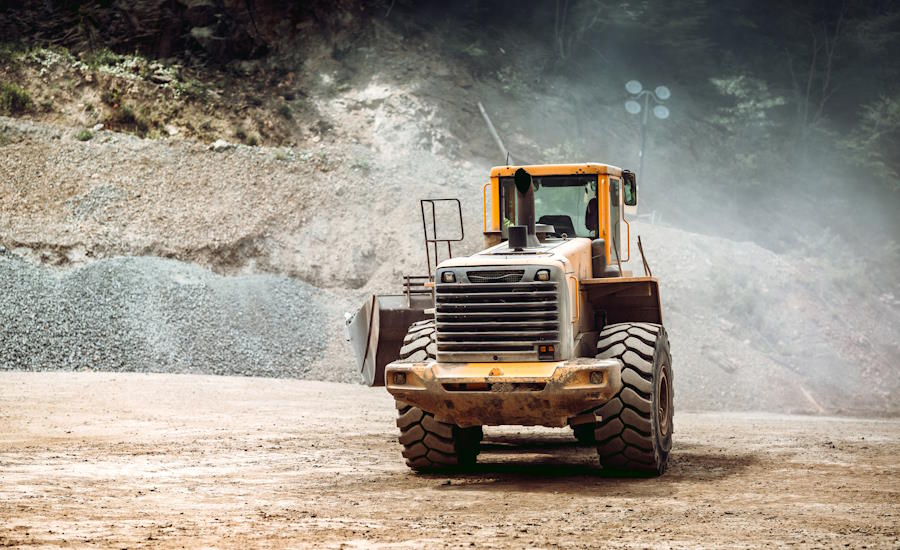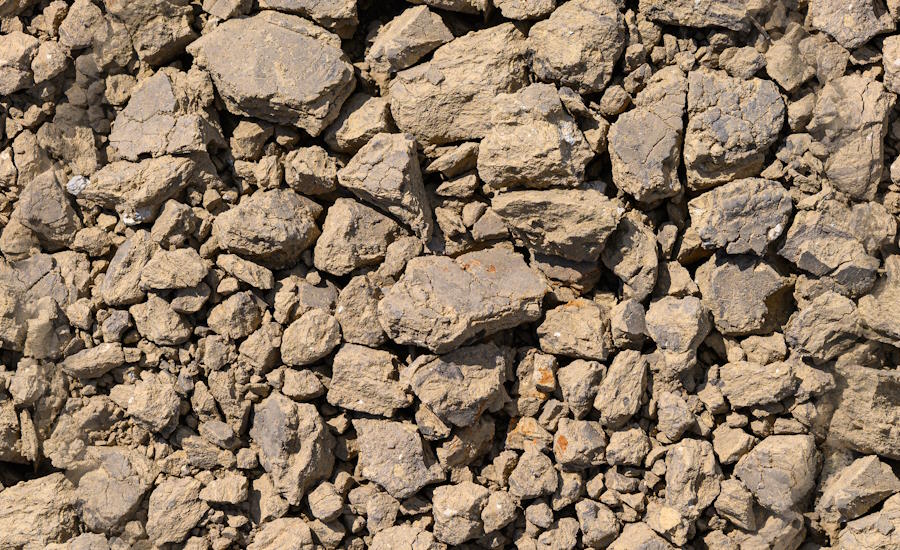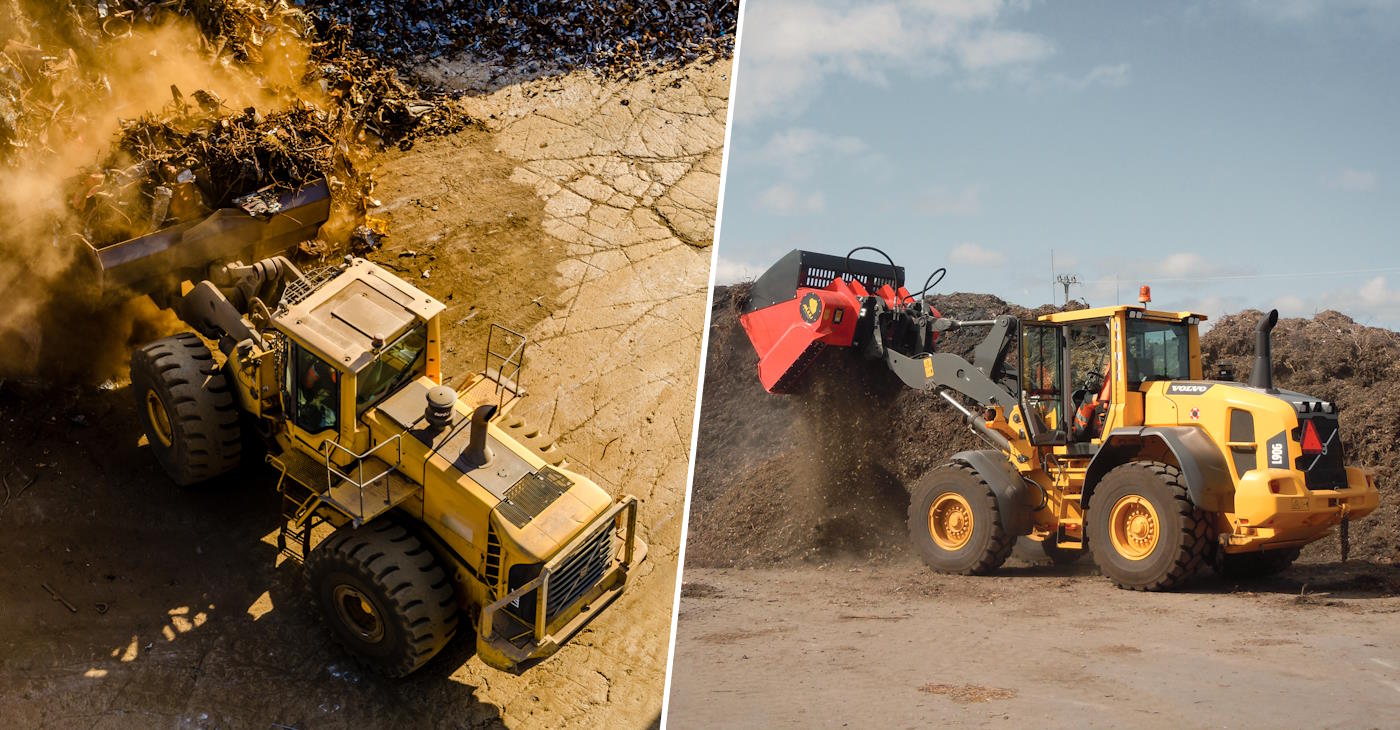A screening bucket can process a broad variety of natural materials, transforming what might otherwise be discarded or left on-site into valuable resources. Topsoil containing organic debris, clay mixed with stones, sandy aggregates, excavated materials, and even composting masses of leaves and yard waste can all be sifted and refined through a loader screening bucket. In more specialized applications, certain screening buckets handle gravel of different sizes, peat, dredged sediment, or reclaimed asphalt. The versatility stems from adjustable screening mechanisms that allow operators to choose the appropriate fraction size and sorting technique. This dynamic adaptability ultimately makes screening buckets a cost-efficient solution for recycling, landscaping, and site preparation tasks across the construction and excavation industry.
First things first – what the heck is a screening bucket?
In basic terms, a screening bucket is an attachment that can be mounted on a wide range of earth-moving machines, including wheel loaders and excavators. Its purpose is to separate materials based on size and composition. Instead of relying on a stationary screen or a dedicated screening plant, operators can attach one of these specialized buckets to a loader’s lifting arm and process material directly at the source. The bucket typically comprises a cylindrical drum or series of rotating discs, grates, or other internal mechanisms designed to trap oversized or undersized particles while allowing desired fractions to pass through. This makes the loader screening bucket an ideal tool for on-site recycling, soil improvement, backfilling operations, and general surface remediation.
Screening buckets come in various sizes to match different wheel loaders, from compact loaders designed for small-scale landscaping to large, heavy-duty models used on substantial commercial and infrastructure projects. The robust design, incorporating wear-resistant metals and high-torque motors, ensures a long operational lifespan, even in harsh conditions or when dealing with abrasive materials like aggregate or rocky soil.

More about how they work
The principle behind screening buckets is relatively straightforward but relies on refined engineering. When the loader operator scoops material, the bucket’s internal screening mechanism—often powered by the machine’s hydraulic system—activates and starts rotating or vibrating. This motion agitates the contents of the bucket, causing finer particles such as topsoil or sand to drop through perforations or along the spaces between rotating discs. Meanwhile, larger rocks, debris, or clumps remain inside until they either pass through the appropriately sized opening or are discharged at a different location.
Certain screening buckets employ rotating shafts outfitted with blades or star-shaped discs, a design often referred to as a “star screen.” Others utilize a rotating drum, sometimes akin to a mini trommel, where the material turns within a cylindrical mesh. The operator can control the speed, angle, and sometimes the screening size by adjusting interlocking plates or flexible screening panels. Modern designs often include quick-change screens for shifting from coarse to fine fractions without needing specialized workshop support.
Their capacity have range!
Capacity in a loader screening bucket typically ranges from under a cubic meter for smaller units to upwards of several cubic meters for large-scale systems. Compact screening buckets might hold around 0.5 to 1.0 cubic meters of material, suitable for horticulture, golf course construction, or small contracting firms. On the other hand, heavier-duty versions designed for large wheel loaders can exceed 3 or 4 cubic meters of total volume, enabling rapid processing of massive heaps of aggregate, topsoil, or construction waste.
Choosing the correct capacity involves striking a balance between operational efficiency and the loader’s lifting limits. A screening bucket too large for the carrier machine might compromise stability and maneuverability. Conversely, opting for too small a bucket on a robust loader could lead to suboptimal output. Hence, industry experts advise matching the bucket’s capacity to the loader’s hydraulic output, weight limits, and the scope of the screening project at hand.
Screening bucket for both loader and excavator
Although they are especially popular on wheel loaders, screening buckets also adapt well to excavators, skid-steer loaders, backhoe loaders, and telehandlers. Adaptation kits may be required to ensure the screening bucket’s hydraulic connections, mounting plate dimensions, and weight distribution align properly with the carrier’s specifications. Many manufacturers offer standardized couplings or quick-attach systems that simplify the process, letting operators switch between a standard bucket and a screening bucket in minimal time.
Wheel loaders typically offer the advantage of higher payload capacities and a stable platform, which allows for more comfortable screening operations over extended periods. Some contractors prefer excavators for narrower or deeper sites, whereas wheel loaders excel on more open grounds like building foundations, road projects, or large landscaping endeavors. In any scenario, the screening bucket’s design remains consistent in its goal of sorting and refining material at the point of collection.

Equip your wheel loader and feel the difference!
One of the most compelling advantages is the considerable reduction in transportation costs. Instead of hauling unrefined mixed material to an external screening facility, operators can process the earth or aggregates in situ, then reuse or sell the sorted product. This on-site approach saves time, fuel, and labor. It also reduces the environmental impact by cutting back on unnecessary trucking and disposal expenses.
Moreover, a loader screening bucket introduces considerable flexibility, especially in unpredictable site conditions. If a particular subgrade needs finer soil, the operator can produce it immediately. If large stones need segregation to protect underlying pipes or cables, the bucket can handle that as well. The integrated, straightforward nature of the device allows for immediate quality control, letting contractors adjust screening size or fraction composition in real-time. In addition, screening buckets tend to be more compact than full-scale screening plants, making them suitable for urban construction sites, small-scale landscaping, or projects where space is limited.
A follow up question would then be, where can these buckets be purchased? Well, you won’t have to look any further than ALLU.net, which offers a complete assortment of screening buckets and crusher buckets for both excavators and loaders!
When they come into use
These attachments find extensive application in road construction, where significant amounts of gravel, sand, and compactable fill need sorting. Screening buckets also play a pivotal role in pipeline and cable trench projects, guaranteeing that backfill meets the specified granulometry to avoid pipe damage or settlement issues. In agriculture, compost screening stands out as a prime example, ensuring that organic matter is uniform before distribution on fields.
Landscaping professionals benefit greatly when they must sift rocks and debris out of topsoil to produce a neat, root-friendly surface for lawns or planting beds. Municipalities can employ screening buckets for park maintenance, beach cleaning, or snow removal combined with aggregate separation. Essentially, any scenario requiring separation of coarse material from finer aggregates, or vice versa, can profit from a well-chosen loader screening bucket.

Price range – nothing this good comes cheap
Costs vary widely, depending on bucket capacity, brand reputation, wear-part quality, and the presence of advanced features like adjustable screening size or specialized rotor systems. Smaller, entry-level screening buckets might start around USD 7,000 to 10,000, while mid-range models for larger loaders often fall in the USD 15,000 to 25,000 bracket. High-capacity, heavy-duty systems for demanding industrial applications can exceed USD 30,000 or more, particularly if they incorporate robust wear-resistant materials or sophisticated hydraulic controls.
When evaluating cost, one should consider not only the purchase price but also long-term factors such as maintenance, part replacements, and overall profitability gained by on-site recycling and reduced waste disposal. Many suppliers and manufacturers offer financing plans or rental programs, permitting potential buyers to try out the technology before committing to a purchase.
Other screening methods and machines
While a screening bucket for a loader boast unparalleled on-site convenience, certain projects call for alternate or supplementary approaches regarding mechanical screening. Stationary vibrating screens in aggregate yards remain the go-to option for processing large volumes over extended time frames. Trommel screens, featuring rotating perforated cylinders, excel at separating light organic materials like compost or biomass from soil. For large-scale quarry operations or specialized mineral processing, heavy-duty screening stations integrated into crushing plants handle significantly higher throughput.
In addition to mechanical screening, some operators combine magnetic separators or air classifiers to remove ferrous materials or lightweight fractions. These integrated systems yield a highly refined final product, especially in demolition or recycling scenarios involving metals, plastics, or wood. Nonetheless, when the goal is immediate, flexible, and relatively high-quality screening right at the jobsite—particularly for wheel loader applications—a loader screening bucket remains one of the most efficient and user-friendly solutions.
We summarize – here’s why you should get a screening bucket for a loader!
Through their compact yet powerful design, loader screening buckets have redefined material handling in construction, landscaping, and beyond. From rapidly separating rock from soil to refining compost into a uniform, high-grade product, these versatile attachments save money, reduce environmental impact, and enhance safety on-site. Whether one needs to replace multiple steps in the material processing chain or simply wants a nimble device for day-to-day site improvements, investing in a screening bucket for a wheel loader can be the transformative solution that streamlines operations and boosts productivity.
What should we write about next? Feel more than welcome to suggest our upcoming topic of conversation, contact us here.

